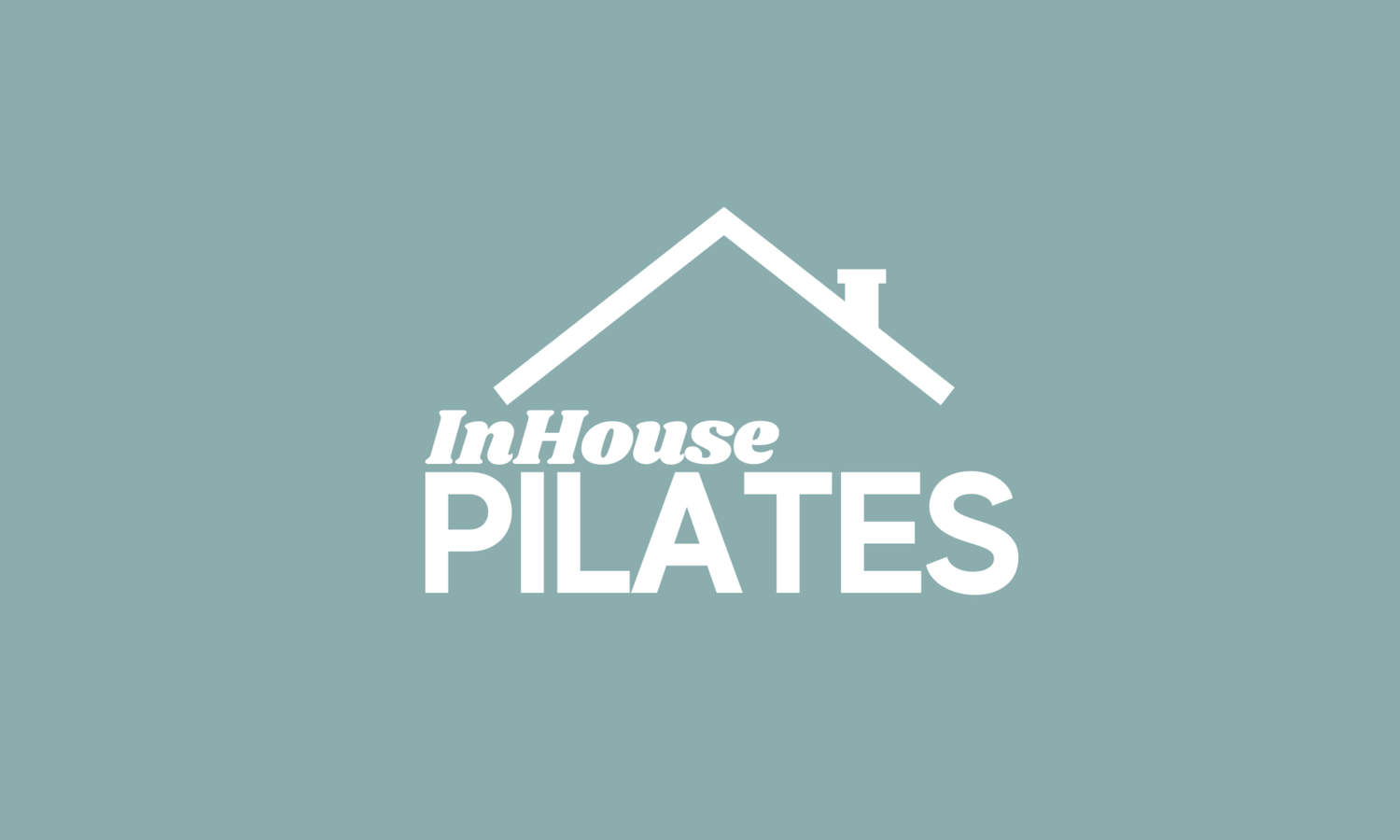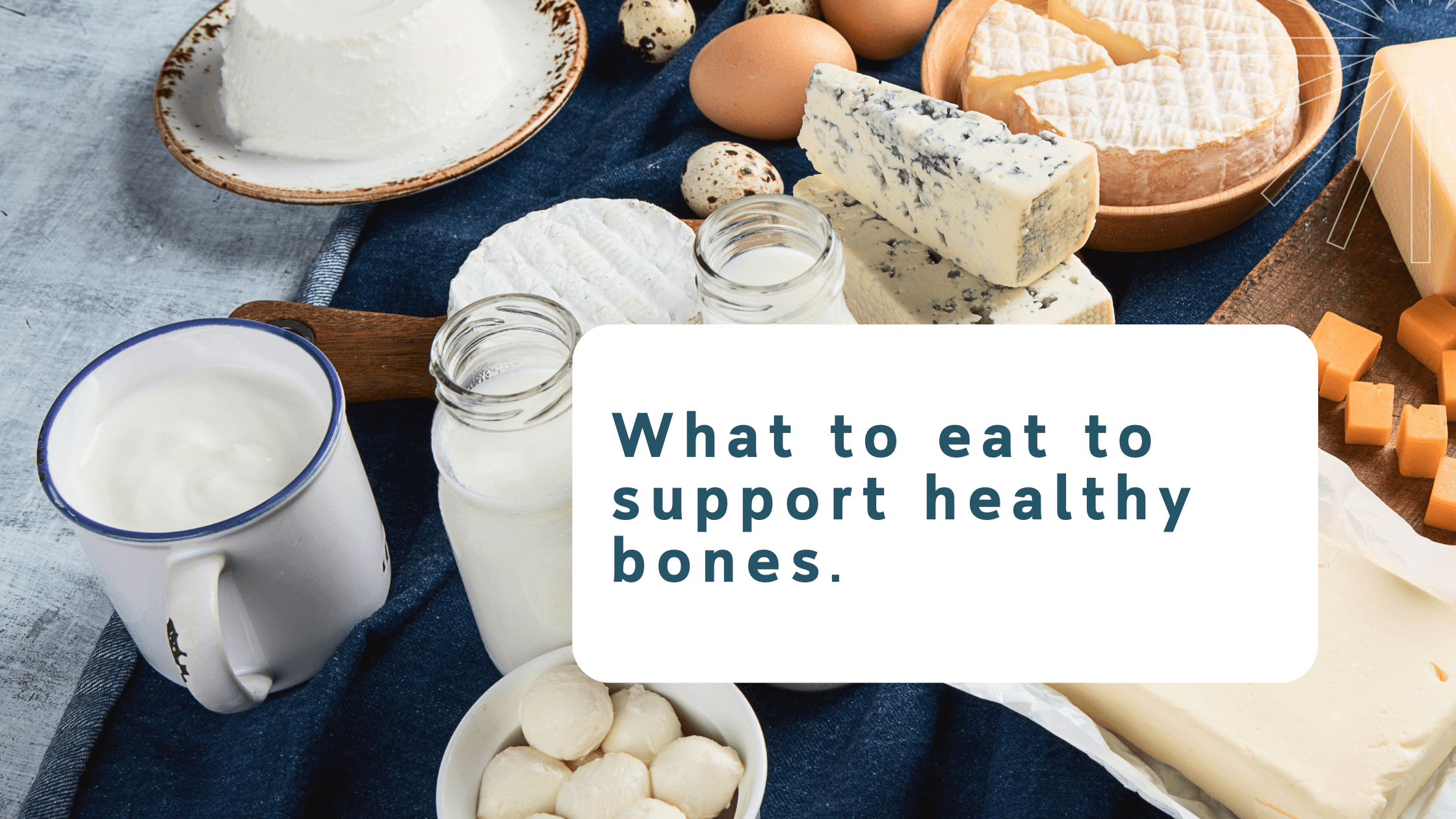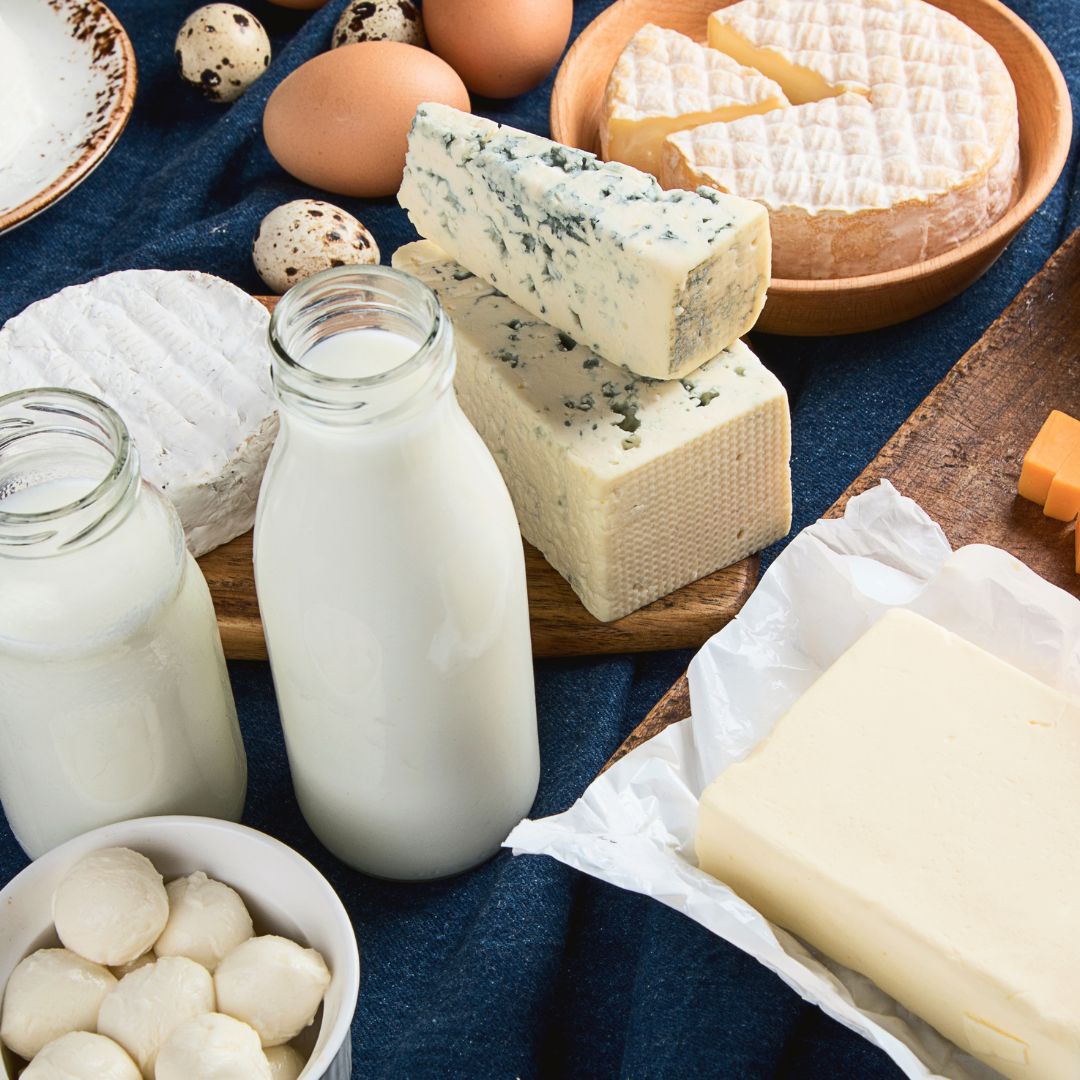What to eat to support healthy bones.
Like pretty much every other area of our health, bone health can most definitely be supported by eating a well-balanced healthy diet.
This is an area that we need to be targeting when we are young as peak bone mass (the best our bones will ever be) is attained at around 28 years of age.
Dense, strong, large bones are a result of several factors- genetics, adequate nutrients, and resistance, or weight-bearing exercise. Keeping kids and teenagers on a healthy varied diet and encouraging them to do lots of active play and sport to reach maximum peak bone mass, but also to create good dietary and physical exercise habits for life is a game-changer.
After our third decade, there is a slow decline in bone mass which accelerates after menopause for women and after about age 70 for men. However, although decline is inevitable, it can be steep or gradual depending on your lifestyle choices.
A large reduction in bone mass leads to fragile bones with a ‘honeycomb’ structure which are prone to fracture. A fracture, especially of the hip, can lead to loss of independence and a higher risk of mortality. Therefore, it is essential to take steps to support your bone health.
Bone is built of minerals.
The key minerals are calcium, phosphorus, magnesium, and some sodium and bicarbonate.
Bone is constantly broken down and remodelled, so a steady supply of these minerals plus the vitamins that support the bone modelling process is needed.
Our needs for calcium are significantly increased in the teen years and then again in older age as we build strong bones and then strive to keep them strong.
Vitamins D, C, and K are important, principally vitamin D.
Calcium is abundant in dairy foods such as milk, yoghurt, cheese, and kefir.
Other rich sources include bone itself. So, if you eat tiny fish bones (such as in whitebait, or the soft bones in canned salmon or sardines), you are consuming calcium and other bone minerals.
Plant milks are popular these days, but it is vital to check that your chosen milk is fortified with calcium to mirror the same level as cow’s milk.
Calcium and magnesium can also be found in green vegetables such as bok choy, broccoli, collard greens, spinach, and kale. Have a look at the link below for good sources of bone-healthy foods. Sources are diverse so a varied diet will provide all you need.
Vitamin D is trickier to get from food.
There are a few sources such as fatty fish and eggs. Also, quite a few foods such as milks aimed at osteoporosis prevention, breakfast cereals, table spreads, and even orange juice can be fortified with calcium and/or vitamin D. For most of us, however, our major source of vitamin D is sunlight.
We have within our bodies the precursor to active vitamin D, and sunlight on the skin allows the conversion process to occur. Vitamin D is essential for our bodies to absorb calcium.
It is also a very important nutrient for general immune health. Getting out in the sun regularly with skin exposed (not protected by sunscreen or clothing) is difficult for some people due to culture, immobility, work hours, or just the inclement climate where they live!
.
Vitamin D deficiency is surprisingly prevalent even in a sunny country like Australia. Therefore, it is wise to take a vitamin D supplement, at least through the winter months, if you are over 50 or you know that your vitamin D levels are low (your doctor can test for this).
Therefore, it is wise to take a vitamin D supplement, at least through the winter months, if you are over 50 or you know that your vitamin D levels are low (your doctor can test for this).
The ability of the body to absorb the calcium that we eat is also an important consideration. Certain nutrients can interfere with calcium absorption.
Phytates, found in wheat bran and legumes block absorption. It can be helpful to eat your calcium-rich foods in a different meal to your high fibre foods. Cereals or breads which contain wheat bran tend to be OK, but 100% wheat bran will block calcium.
Tea and coffee contain tannins which reduce calcium’s absorption. Caffeine is also a contributor to bone loss, so enjoy your cuppa outside of mealtimes, and keep to a sensible number of cups per day.
Spinach, rhubarb, and some beans contain oxalates, another blocker of calcium absorption. There’s no need to avoid these highly nutritious foods, just don’t count them as good calcium sources.
Protein is very important as we age to maintain good muscle mass.
Added to regular resistance exercise plus flexibility and balancing exercises, good muscle mass can make a big difference to reducing falls and therefore avoiding fractures.
However, a diet which is overly high in protein can contribute to bone loss (e.g. use of protein powders, etc.).
Alcohol in excess also leads to bone loss. A couple of drinks per day shouldn’t cause any problems.
Another aspect of a poor diet is excessive sodium (usually in the form of salt). Excess sodium leads to bone loss. Highly processed and convenience foods are almost all high in sodium. Buying and cooking fresh foods from scratch is your best defence against excess sodium (which is also a key contributor to high blood pressure).
Taking care of your bones through diet and exercise is such a worthwhile investment, and the sooner you start the better! Your doctor may suggest calcium and vitamin D supplements to help things along if deficiencies already exist, but there is a lot that you can do simply through paying attention to what you eat.
For a good resource for bone-friendly foods click here.





